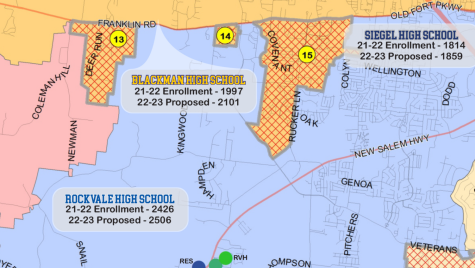AP Art Profile
In May, most students are preparing for final exams and AP exams. However, for those in AP art, the exam starts when they walk into the classroom in August: the students must create a portfolio rather than take a traditional exam.
The portfolio consists of three sections. The first section, also known as the “breadth” section, is made up of 12 unique projects.
“[Students] sort of show off what they are capable of doing. [In the breadth section] It’s a variety of different methods, media, and approaches,” said Noi Woodruff, AP art teacher.
Throughout the first half of the year, the students do a total of 18 breadth pieces, but only 12 are chosen to submit.
The second half of the school year is spent working on the “concentration” section of the portfolio.
The second set of 18 pieces must explore a specific focus or theme throughout each piece.
“It has to be something very specific; not just ‘I’m going to do landscapes.’ It might be, ‘I’m going to do landscapes on the farm my grandparents lived on, and I’m going to focus and use oil pastels as my media,’” said Woodruff.
Like with the breadth section, students choose 12 of the concentration pieces to submit digitally.
Along with sharing the same theme, the 12 concentration pieces also have to have the same style. When the concentration pieces are submitted, they are accompanied by a concentration statement.
“[They have to write] what happened during their concentration because it changes a little bit during the semester. You find yourself exploring something else,” said Woodruff.
“It’s time consuming and it takes a lot of patience,” said Leilani Nieves, junior. QUOTE ABOUT HER FOCUS
Three judges choose the score for every piece. All three scores can be one point apart from each other at most.
“They grade very hard. You have to have at least a three to get college credit for one of the beginning art courses, but in the state of Tennessee you have to have at least a four,” said Woodruff.
Most students get a score of four, although the highest score a student can receive is a five.
“Even if you’re not going to go into a career in art . . .you show them this college level portfolio you did, and they’re impressed.”












